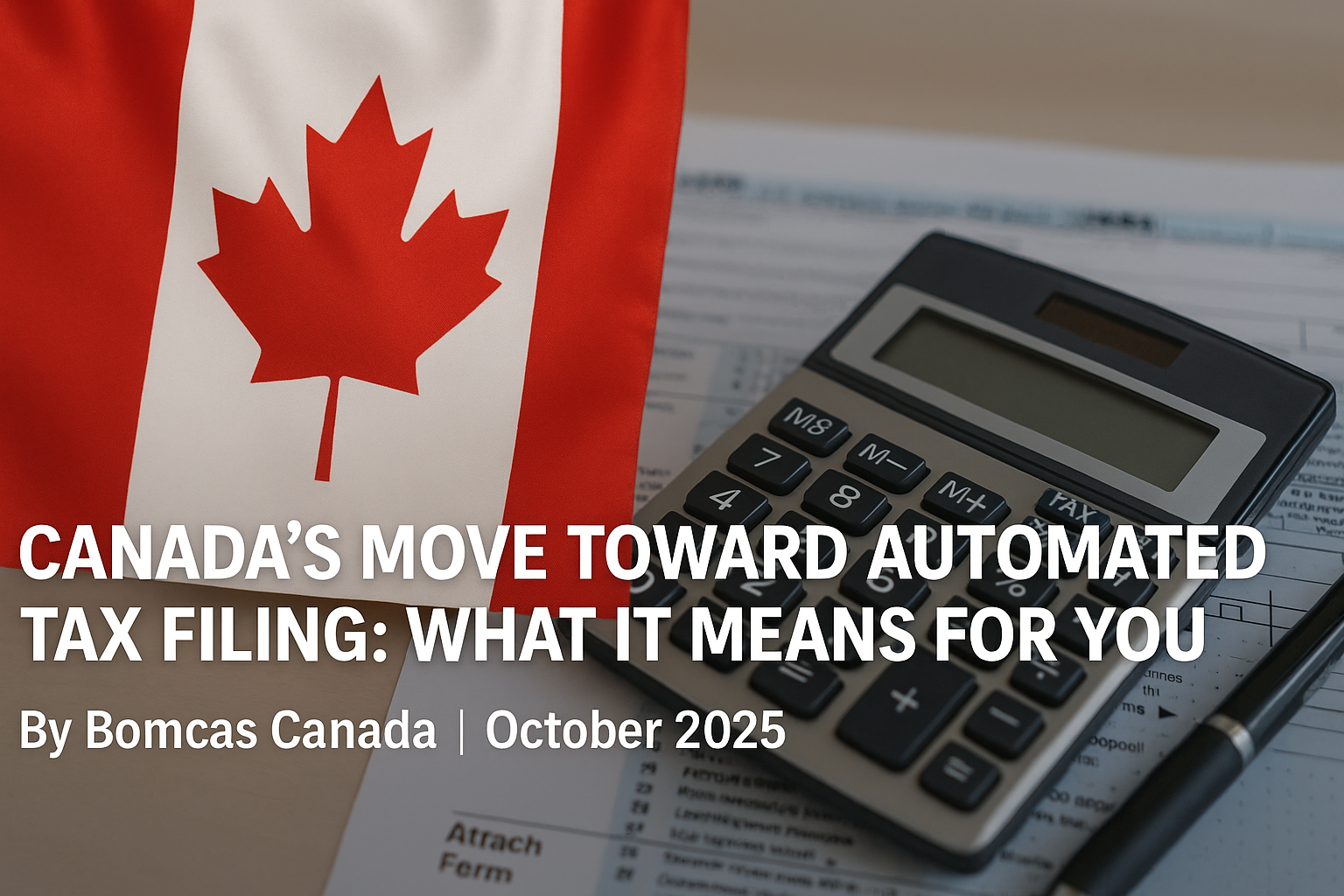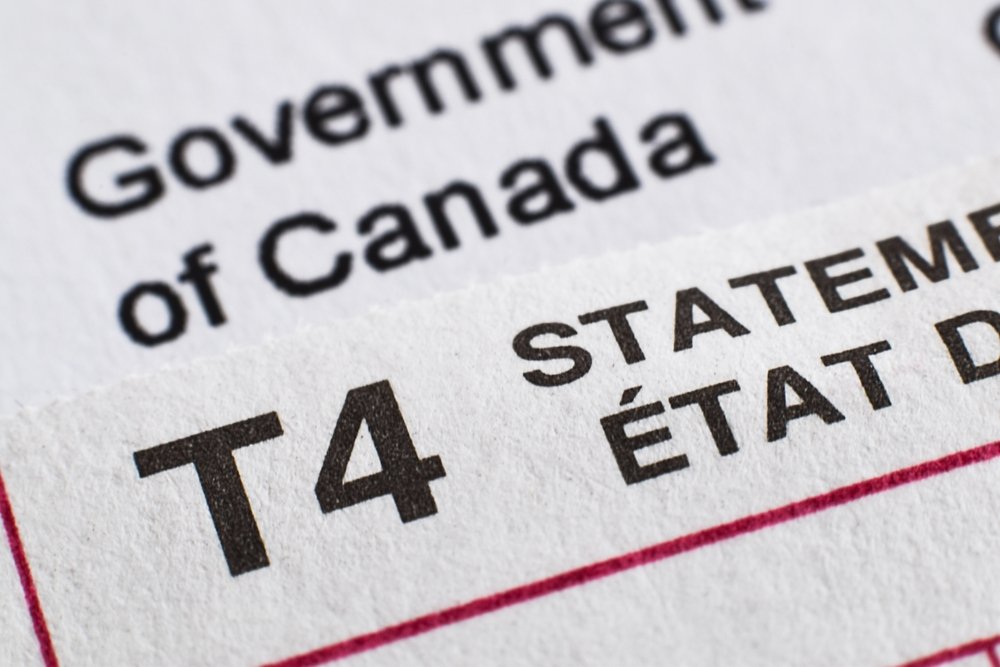If you’re running a business in Edmonton, filing your corporate tax return demands attention to detail and awareness of changing requirements. Every resident corporation in Canada must file a T2 Corporation Income Tax Return each year, even if you don’t owe any tax.
The stakes are even higher now that the Canada Revenue Agency (CRA) requires electronic filing for most corporations starting in 2024. Non-compliance could cost you up to $1,000 in penalties. Whether you operate a small business or manage a large corporation in Edmonton, knowing these requirements helps you maintain compliance and avoid unnecessary costs.
This guide breaks down the essential steps of filing your corporate tax return in Edmonton. You’ll learn about the new electronic filing requirements and how to navigate both federal and provincial tax obligations. We’ll cover everything from gathering the right documentation to meeting critical deadlines, giving you the knowledge to file your corporate taxes properly and efficiently.
Understanding Corporate Tax Requirements in Edmonton
“All incorporated Canadian businesses must file a T2 corporate tax return with the CRA each year.” —BOMCAS Corporate Tax Accountants, Professional corporate tax accounting firm, Edmonton
Corporate tax regulations in Edmonton follow both federal frameworks and Alberta’s distinctive provincial system. Getting a handle on these obligations can protect you from expensive penalties while helping optimize your tax position. Let’s look at what filing requirements you’ll face as an Edmonton business owner.
Who must file a T2 corporate tax return
Every corporation operating in Edmonton must file a federal T2 Corporation Income Tax Return, even when there’s no tax payable. This requirement applies to:
- All resident corporations (except tax-exempt Crown corporations, Hutterite colonies, and registered charities)
- Non-profit organizations
- Tax-exempt corporations
- Inactive corporations
The CRA gives you two options: the standard nine-page T2 Corporation Income Tax Return that any corporation can use, or the simpler two-page T2 Short Return for eligible businesses.
If you run a corporation in Edmonton, you’ll need to file both the federal T2 and a separate provincial AT1 return, as Alberta collects its own corporate taxes unlike most other provinces. Your AT1 return must be filed within six months from the end of your corporation’s tax year.
Resident vs. non-resident corporation requirements
Figuring out your residency status is key to understanding your tax obligations. A corporation qualifies as a Canadian resident if:
- It was incorporated in Canada after April 26, 1965, or
- Its central management and control are exercised in Canada
Central management is typically determined by where board meetings happen and strategic decisions are made—not simply by where the corporation was formed.
For non-resident corporations, you still must file a T2 return if you:
- Carried on business in Canada
- Had a taxable capital gain in Canada
- Disposed of taxable Canadian property during the tax year
When your corporation has ties to both Canada and another country, tax treaties often contain “tiebreaker rules” that determine residency. Under these rules, subsection 250(5) may deem your corporation non-resident in Canada for tax purposes.
Alberta’s unique provincial tax system
Unlike most provinces, Alberta administers and collects its own corporate taxes rather than having the federal government do so. This means corporations with a permanent establishment in Alberta must file an Alberta Corporate Income Tax Return (AT1) in addition to the federal T2.
Alberta offers significant tax advantages with the lowest corporate tax rates in Canada. The provincial rate is 8%, which combined with the federal rate of 15%, creates a total corporate income tax rate of 23%. Small businesses with active business income below CAD 696,680.10 benefit from a reduced combined rate of just 11% (9% federal and 2% provincial).
For electronic filing, corporations with gross revenue exceeding CAD 1.39 million must net file their AT1 returns, with penalties of CAD 1,393.36 for non-compliance. Tax preparers must net file all AT1 returns regardless of the corporation’s size, with limited exceptions.
2025 filing changes you need to know
For the 2025 tax filing season, several important changes have been implemented. Most notably, the capital gains inclusion rate change originally planned has been postponed, with the Department of Finance announcing a new effective date of January 1, 2026.
To accommodate taxpayers reporting capital gains, the CRA will grant relief for late-filing penalties and interest until June 2, 2025, for individual filers and until May 1, 2025, for trust filers. This gives you additional time to meet tax filing obligations during this transitional period.
Other significant changes for 2025 include:
- Modifications to the Alternative Minimum Tax (AMT) calculation, including an increased minimum tax rate and higher basic exemption threshold
- New reporting requirements for digital platform operators, who must now collect and report information on sellers using their platforms
- An increase in the Home Buyers’ Plan (HBP) withdrawal limit from CAD 48,767.61 to CAD 83,601.61 for withdrawals made after April 16, 2024
For Edmonton corporations, it’s essential to stay current with these changes while maintaining compliance with both federal and provincial filing requirements. Generally, your return is due within six months from the end of your corporation’s tax year, though payment deadlines may differ depending on your business structure.
Preparing Your Business for Tax Filing
Successful corporate tax filing starts with good preparation throughout the year. Setting up solid record-keeping practices and organized financial systems creates the foundation for a smooth filing experience before you even look at forms and calculations.
Essential business records to maintain
The CRA legally requires businesses to keep comprehensive records that support all income and expense claims. These records serve as the backbone of your tax filing and your defense in case of an audit.
According to CRA guidelines, you must maintain various documents including:
- Income records with dates, amounts, and sources
- Expense receipts showing dates, seller details, and descriptions
- Property purchase and sale records
- Ledgers, journals, and financial statements
- Bank statements, deposit slips, and canceled cheques
- Contracts, invoices, and correspondence supporting transactions
For receipts to be valid, they must contain the seller’s name and address, your business information, a detailed description of goods/services, and the vendor’s business number for purchases over CAD 41.80. When receipts aren’t available, document the transaction details in your expense journal.
Well-organized records do more than meet legal requirements—they help identify all income sources, support claims for deductions and input tax credits, make audit processes smoother, and provide insights into your business’s financial position.
Setting up your CRA My Business Account
Starting spring 2025, the CRA will transition to online mail as the default method for delivering most business correspondence. This makes a CRA My Business Account essential for Edmonton corporations.
To set up your account:
- Visit the CRA website and select “CRA register”
- Enter your social insurance number, postal code, date of birth, and an amount from a recent tax return
- Choose a delivery method for your CRA security code
- Create a CRA user ID and password
- Select and answer five security questions
- Review and agree to the terms and conditions
- Once you receive your security code, log in and enter it
- Provide your 9-digit business number to complete setup
This digital portal lets you manage various business accounts including GST/HST, payroll, and corporation income taxes. You can also file returns, make payments, track refunds, and communicate with the CRA securely.
If your corporation has multiple businesses, you can add all your business numbers to a single account through the “Manage Business number(s)” function in your profile.
Organizing financial statements and receipts
Financial statements form the core of your corporate tax return. For corporations with gross revenue or assets of CAD 1.39 million or more, you’ll need to complete specific financial schedules using the General Index of Financial Information (GIFI) codes.
The GIFI system allows the CRA to collect standardized financial information. How you prepare and file your T2 return determines how you’ll prepare these statements. Include the same level of detail with GIFI codes as you would with traditional financial statements.
Smaller corporations (both gross revenue and assets less than CAD 1.39 million) can use Form T1178, General Index of Financial Information – Short.
To prepare effectively:
- Record all income and expenses as they occur
- Store receipts and invoices securely, either digitally or in an organized filing system
- Regularly reconcile bank statements with accounting records
Maintaining separate business and personal accounts prevents mixing funds and simplifies tax preparation. Consider accounting software like QuickBooks, Xero, or FreshBooks to automate invoicing, expense tracking, and financial statement generation.
Focus primarily on organizing your income statements (showing revenues and expenses), balance sheets (assets, liabilities, equity), expense records (with supporting documentation), and payroll records (if applicable). This thorough preparation significantly reduces stress during tax season and helps avoid costly errors.
T2 Corporation Income Tax Return Basics
The T2 Corporation Income Tax Return serves as the foundation of corporate tax filing in Canada and is the main document every business must submit to the CRA. Getting to know its structure and requirements helps Edmonton businesses stay compliant and avoid penalties.
Components of the standard T2 return
The standard T2 Corporation Income Tax Return contains nine comprehensive pages that any corporation can use. This document captures your business’s financial information, tax calculations, and eligibility for various credits and deductions.
The main components include:
- Identification section – Contains basic corporate information
- Income calculation – Where you determine net income for tax purposes
- Taxable income calculation – Applying adjustments to net income
- Tax and credit calculations – Including provincial/territorial allocations
- Summary of tax and credits – Final tax liability determination
- Certification – Where an authorized officer signs the return
Every corporation carrying on business in Canada during its fiscal year must file this return, even if there’s no tax payable. The information you provide on your T2 return determines which additional schedules must accompany your filing.
When to use the T2 Short Return option
The T2 Short Return offers a simplified alternative at just two pages plus essential schedules. This streamlined option is designed for specific business categories that meet strict eligibility criteria.
Your corporation can use the T2 Short Return if it falls into either of these categories:
- A Canadian-controlled private corporation (CCPC) that has either nil net income or a loss for income tax purposes throughout the tax year
- A corporation exempt from tax under section 149 of the Income Tax Act (such as a non-profit organization)
To qualify for this simplified option, your corporation must meet all these additional conditions:
- Maintain a permanent establishment in only one province or territory
- Not claim any refundable tax credits (except installment refunds)
- Neither receive nor pay out taxable dividends
- Report exclusively in Canadian currency
- Have no Ontario transitional tax debit
- Have no amount calculated under section 34.2
If your corporation doesn’t meet these specific criteria, you must file the standard nine-page T2 return instead.
Required schedules for Edmonton businesses
Beyond the main T2 form, Edmonton businesses must include various schedules providing detailed financial information. The exact requirements depend on your business activities and structure.
Mandatory schedules for all corporations include:
- Schedule 100: Balance sheet information
- Schedule 125: Income statement information
- Schedule 141: GIFI additional information
Common additional schedules often required include:
- Schedule 50: Shareholder information (for private corporations)
- Schedule 8: Capital Cost Allowance (CCA) details
- Schedule 7: Information about aggregate investment income and active business income
- Schedule 6: Summary of dispositions of capital property (for capital gains/losses)
- Schedule 1: Net Income (Loss) for Income Tax Purposes
Since Alberta administers its own corporate tax system, Edmonton businesses must file both the federal T2 and the provincial Alberta Corporate Tax Return (AT1). This provincial return must be filed within six months from the end of your corporation’s tax year.
For businesses with gross revenue exceeding CAD 1.39 million, electronic filing of the AT1 is mandatory. Similarly, corporations with gross revenue or assets of CAD 1.39 million or more must complete specific financial schedules using the General Index of Financial Information (GIFI) codes.
The filing deadline for both returns is six months after your fiscal year-end. For instance, if your tax year ends March 31st, your filing due date is September 30th. Missing these deadlines can trigger penalties, highlighting the importance of understanding both federal and provincial requirements unique to Edmonton businesses.
Step-by-Step Filing Process
Filing an Edmonton corporate tax return demands methodical execution to meet both federal and provincial requirements. A systematic approach reduces errors and potential penalties while helping you claim all eligible deductions.
Gathering necessary documentation
The foundation of an accurate corporate tax filing starts with collecting all required documentation. For Edmonton businesses, this includes:
- Federal Business Number assigned by Canada Revenue Agency
- Corporation details (incorporation date, legal name, incorporation certificate number)
- Alberta corporate tax account number and corporation number
- Financial statements (income statement, balance sheet)
- Detailed payroll records with Payroll Deduction remittances
- All GST/HST reports filed during the tax year
- Previous year’s T2 and AT1 returns
- Bank statements for the last month of the taxation year
Start by organizing your documents by category, making sure all financial information matches your bank statements. If you’re an Alberta-based business, both your T2 (federal) and AT1 (provincial) returns need specific information about your permanent establishment in the province.
Completing your corporate tax forms
After gathering your documentation, the next step is completing the appropriate forms. For tax years beginning after 2023, electronic filing is mandatory for most corporations, with penalties of CAD 1393.36 for non-compliance.
When working on your T2 return, figure out whether you qualify for the T2 Short Return (two pages plus one schedule) or need to use the standard nine-page version. At the same time, prepare your AT1 return if your corporation maintains a permanent establishment in Alberta at any time during the taxation year.
Before submitting, check that you’ve included all required schedules based on your business activities. You can complete the AT1 filing through TRA-certified tax preparation software if your corporation has a valid Alberta corporate account number (CAN), which matches the Corporate Access Number on your Alberta Certificate of Incorporation.
Calculating your tax liability
Calculating your tax liability accurately means understanding applicable rates and potential deductions. The basic federal rate of 38% drops to 15% after federal tax abatement and general tax reduction. For Canadian-controlled private corporations (CCPCs) claiming the small business deduction, the net federal tax rate falls to 9%.
In Alberta, corporations benefit from an 8% provincial tax rate, creating a combined rate of 23% for general corporations. Small businesses get a reduced provincial rate on the first CAD 696,680.10 of taxable income.
For CCPCs, determining eligibility for tax installment exemptions is particularly important. A CCPC may defer tax payment to the end of the third month following its taxation year if it claims the Alberta small business deduction and has taxable income of CAD 696,680.10 or less.
Reviewing for accuracy
The final step involves a thorough review to prevent common filing errors. The Canada Revenue Agency often conducts limited reviews of specific lines in corporate returns, asking for supporting documentation to verify claims.
Focus primarily on these common mistake areas:
- Incomplete information and documentation
- Misclassified personal versus business expenses
- Incorrectly claimed deductions and credits
- Expenditures that should be capitalized
- Misclassification of income
During your review, check all figures and calculations, make sure you’ve included all necessary forms and schedules, and confirm eligibility for claimed deductions and credits. After filing, keep all receipts and supporting documents for at least six years, as the CRA may request these during a potential review.
Responding promptly to any CRA inquiries is crucial—if you don’t, you could face automatic reassessment and disallowance of claimed expenses.
Electronic Filing Options for Edmonton Businesses
Electronic filing has become the standard for corporate tax submissions in Edmonton, with over 90% of corporations already using this method. For tax years starting after 2023, electronic filing is mandatory for most corporations, with limited exceptions for insurance corporations, non-resident corporations, those reporting in functional currency, and tax-exempt corporations under section 149 of the Income Tax Act.
CRA-certified tax software solutions
The Canada Revenue Agency certifies commercial tax preparation software packages to ensure compatibility with CRA systems. “Certified” means the software developer has completed a process with the CRA confirming their product works properly with government filing systems.
When selecting software, keep in mind that the CRA doesn’t verify grammar or spelling within these packages, nor does it test for user-friendliness. Currently, all corporations must use CRA-certified software that allows for:
- Complete electronic preparation of returns and schedules
- Financial statement information entry using GIFI codes
- T2 Auto-fill functionality to download information directly from CRA
- T2 Attach-a-doc service for supporting documentation
It’s your responsibility to confirm with the software developer if there are any restrictions and to ensure you’re using the most recent version. While the CRA doesn’t endorse specific products, you can find certified options on the CRA website, listed alphabetically by product name.
NETFILE requirements and process
To file your T2 Corporation income tax return directly through the Internet, you’ll need either:
- A Web Access Code (WAC) – typically used when filing for a single corporation
- An EFILE number and password – generally used when filing for multiple corporations
Web Access Codes can be obtained within certain commercial tax preparation software packages without calling the CRA’s Corporation Internet Filing Helpdesk. Alternatively, tax professionals filing multiple corporate returns can complete the EFILE Registration online form to receive an EFILE number and password.
Electronic filing offers substantial benefits:
- Immediate confirmation of receipt (legal proof for your records)
- Faster processing and notice of assessment
- Quicker refunds (particularly when combined with direct deposit)
- Environmental benefits through reduced paper consumption
- Cost savings on printing and mailing
For Alberta’s provincial AT1 return, corporations with gross revenue exceeding CAD 1.39 million must net file their returns or face penalties of CAD 1,393.36. Tax preparers filing more than 5 AT1s in a calendar year must net file all returns regardless of the corporation’s size.
Digital signature requirements for 2025
As of June 22, 2023, electronic signatures have been permanently authorized for several key tax forms, including the T183CORP Information Return for Corporations Filing Electronically. This change, welcomed by Tax-Filer Empowerment Canada, provides more convenience and flexibility for Edmonton businesses.
Electronic signatures must include a date-and-time stamp in this format:
- Year/month/day
- HH/MM/SS (hour/minute/second)
The CRA accepts date-and-time stamps that are either automatically populated by the software or manually entered by the taxpayer or electronic filer. Since electronic signature solutions have various default settings, you might need to adjust document formatting settings to ensure the date and time display correctly on electronically signed forms.
Besides retaining electronically signed forms, keep certificates of completion provided by third-party electronic signature services. These certificates are particularly valuable if the electronically signed copies don’t display the timestamp, as they may be requested during CRA monitoring programs.
Starting January 2025, new online validations will take place to ensure proper file submission. Files must be 150 MB or less (or zipped if larger), follow CRA’s published schemas and XML specifications, and include a T619 electronic transmittal record with matching account information.
Meeting Important Deadlines

Keeping up with tax deadlines is one of the most critical aspects of corporate compliance in Edmonton. Missing these key dates can trigger penalties, interest charges, and unwanted scrutiny from tax authorities. Here’s the timeline framework your Edmonton business needs to follow.
Understanding your fiscal year end
A corporation’s tax year is its fiscal period, which cannot exceed 53 weeks (371 days). If you’ve recently incorporated, you can declare your tax year on your first T2 return after incorporation, using the incorporation date as the tax year start. For all subsequent returns, your tax year start will be the day after your tax year-end.
Most corporations align their fiscal year-end with the calendar year (December 31st), but you’re not required to do this. Once selected, however, your tax year generally stays the same from year to year unless you get approval from the CRA to change it.
You won’t need approval to change your tax year in certain situations:
- When the corporation has wound up (filing its final return)
- When emigrating to another country
- When becoming exempt from tax or ceasing to be exempt
- When a person or group acquires control of the corporation
Six-month filing deadline calculation
Corporate tax returns must be filed within six months of the end of each tax year. How you calculate this deadline depends on how your fiscal period ends:
- When your tax year ends on the last day of a month, file by the last day of the sixth month after the end of the tax year
- When your tax year ends on a day other than the last day of a month, file by the same day of the sixth month after the end of the tax year
For example, if your fiscal year ends March 31, your filing deadline is September 30. If it ends January 15, your deadline would be July 15.
Installment payment schedules
While returns are due six months after year-end, corporate tax payments work differently. Most corporations must make installment payments throughout the year, with any remaining balance due shortly after year-end.
Monthly installments are generally due on the last day of each month during the tax year. Canadian-controlled private corporations (CCPCs) may qualify for quarterly installments if they:
- Are a CCPC with a perfect compliance history
- Meet specific eligibility criteria
CCPCs are exempt from paying tax installments throughout the taxation year if they:
- Claim the Alberta small business deduction, and
- Have taxable income of CAD 696,680.10 or less in the current taxation year
These eligible CCPCs can defer total payment to the end of the third month following the taxation year.
Extension requests and requirements
Unlike personal tax returns, corporate tax filing deadlines offer limited flexibility. However, certain circumstances may warrant extensions.
If you miss an objection deadline (normally 90 days from assessment), you must request an extension of time. Submit this application as soon as possible, but no later than one year after the original objection deadline.
If your extension application is denied, you can appeal to the Tax Court of Canada within 90 days of receiving the refusal notice.
When a filing due date falls on a weekend or holiday, your return is considered on time if received or postmarked on or before the next business day.
Provincial Tax Considerations for Alberta Corporations
“The Alberta calculation of taxable income parallels the federal calculation, although taxpayers may claim different discretionary deductions such as capital cost allowance for federal and provincial purposes.” — Alberta Tax and Revenue Administration, Provincial tax authority, Government of Alberta
“The Alberta calculation of taxable income parallels the federal calculation, although taxpayers may claim different discretionary deductions such as capital cost allowance for federal and provincial purposes.” — Alberta Tax and Revenue Administration, Provincial tax authority, Government of Alberta
Alberta stands out among Canadian provinces with its independently administered corporate tax system. This unique approach requires specific knowledge and compliance protocols for Edmonton businesses.
Alberta Corporate Tax Return (AT1) requirements
Every corporation with a permanent establishment in Alberta must file an Alberta Corporate Income Tax Return (AT1), even while submitting the federal T2 . This provincial filing obligation exists because Alberta maintains its own tax collection system, unlike most other provinces that rely on federal collection .
Your AT1 return must be submitted within six months from the end of your taxation year . Effective for tax years beginning after December 31, 2024, all corporations must e-file their AT1 Returns through TRA’s Net File service using certified software .
Some corporations may qualify for exemption from filing an AT1 if they:
- Are registered charities throughout the taxation year
- Have no tax payable under section 35 of the Alberta Corporate Tax Act
- Meet specific criteria as Canadian-controlled private corporations with no permanent establishment outside Alberta
Importantly, a corporation is not exempt from filing an AT1 if it claims any provincial tax credits, despite meeting other exemption criteria .
Provincial tax rates and calculations
Alberta offers the lowest corporate tax environment in Canada with an 8% provincial rate , establishing a combined federal-provincial rate of just 23% . For small businesses with active income below CAD 696,680.10, Alberta provides a reduced 2% rate, creating a favorable 11% combined rate .
The Alberta Allocation Factor, calculated on Schedule 2 of your AT1, determines the portion of your income taxable in Alberta . If your corporation maintains establishments only in Alberta, this factor equals 1, meaning all income is subject to provincial taxation.
Additionally, Canadian-controlled private corporations qualifying for the small business deduction can defer tax payments until the third month following their taxation year if their taxable income remains below CAD 696,680.10 .
Alberta tax credits and incentives
The province provides several valuable tax credits to stimulate business growth and investment, including:
- Innovation Employment Grant (IEG) – Offers up to 20% toward qualifying research and development expenditures , with 8% on eligible scientific research expenditures plus an additional 12% on spending exceeding your base level
- Agri-Processing Investment Tax Credit (APITC) – Provides a 12% non-refundable tax credit for corporations investing over CAD 13.93 million in agri-processing facilities
- Film and Television Tax Credit (FTTC) – Supports productions filming in Alberta to enhance industry growth and competitiveness
- Capital Investment Tax Credit (CITC) – Delivers a 10% non-refundable tax credit for eligible capital expenditures in manufacturing, processing, and tourism
Understanding these provincial considerations ensures Edmonton businesses maximize tax advantages while maintaining compliance with Alberta’s distinct requirements.
Post-Filing Procedures
After submitting your corporate tax return, your responsibilities don’t end there. Proper post-filing procedures keep you compliant and ready for any future interactions with tax authorities.
Record retention requirements
The Alberta Corporate Tax Act requires businesses to maintain comprehensive records after filing. Permanent records (including minutes, share registers, and general ledgers) must be kept for two years after dissolution, while non-permanent records should be retained for six years from the end of the last taxation year they relate to. If you run an unincorporated business, you’ll need to keep permanent records for six years beyond the last day of the taxation year when your business stopped operating.
You must keep these records in Alberta unless you receive written permission to store them elsewhere. While you can request early destruction of records, this requires written approval from both the Canada Revenue Agency and Tax and Revenue Administration. Maintaining an organized record-keeping system saves you significant headaches if questions arise later.
Handling CRA correspondence
After processing your tax filing, the CRA will issue a notice of assessment containing important information about your tax situation. Store this document in a safe place with your other tax records. If changes occur after your initial assessment, you’ll receive a notice of reassessment explaining any corrections or adjustments.
When you use NETFILE, the CRA provides a confirmation number immediately after accepting your return. They’ll either mail your assessment notice or send an electronic notification if you’ve registered for email communications. Review all correspondence carefully to understand any adjustments made to your filing.
Amending previously filed returns
Found an error in your T2? Wait until you receive your Notice of Assessment before requesting amendments. Once it arrives, you typically have three years to request a reassessment either electronically or by mail. For objections to assessments, you must submit your notice within 90 days from the assessment date.
If you’re amending by mail, include your corporation’s name, business number, and relevant tax year—but don’t send your complete return. Only provide details and supporting documents for the specific amendments. Identifying and correcting material errors promptly helps you avoid potential penalties.
Preparing for potential audits
Tax audits require organized documentation including financial statements, receipts, bank statements, and books of account. Edmonton businesses should maintain systematic record-keeping practices not just for compliance, but to create a positive impression during reviews.
Be ready to defend any tax benefit claims with supporting evidence and legal justification. In circumstances beyond your control that prevent you from meeting filing obligations, Tax and Revenue Administration may waive penalties or interest. Many Edmonton businesses find that professional representation during audits significantly eases the process and improves outcomes.
Conclusion
Corporate tax filing demands careful attention to both federal and provincial requirements. Edmonton businesses face distinct obligations, including mandatory electronic filing for most corporations and separate submissions for T2 and AT1 returns.
Tax preparation begins with proper record keeping throughout the year. When you maintain organized financial documents, understand filing deadlines, and stay current with tax law changes, you avoid costly penalties and ensure compliance.
Small business owners benefit significantly from Alberta’s competitive tax environment, which offers the lowest corporate tax rates in Canada. Combined federal-provincial rates of just 11% for qualifying small businesses make Edmonton an attractive location for corporate operations.
For complex corporate tax matters, professional guidance often proves valuable. Contact BOMCAS Edmonton Corporate Tax Accountants for all your business accounting and tax needs to ensure accurate filings while maximizing available deductions and credits.
Success with corporate tax compliance requires staying informed about changing requirements. Regular review of CRA updates, maintaining detailed records, and meeting all deadlines positions your Edmonton business for continued growth and regulatory compliance.
FAQs
Q1. When is the deadline for filing corporate taxes in Edmonton for 2025? Corporate tax returns must be filed within six months of the end of your corporation’s tax year. For example, if your tax year ends on December 31, 2024, your filing deadline would be June 30, 2025.
Q2. Is electronic filing mandatory for Edmonton businesses in 2025? Yes, electronic filing is mandatory for most corporations in Edmonton for tax years starting after 2023. There are limited exceptions for certain types of corporations, but the majority must file electronically or face penalties.
Q3. What are the corporate tax rates for Edmonton businesses in 2025? The combined federal-provincial corporate tax rate for general corporations in Edmonton is 23% (15% federal + 8% provincial). Small businesses with income below $696,680.10 benefit from a reduced combined rate of 11% (9% federal + 2% provincial).
Q4. Do Edmonton businesses need to file both federal and provincial tax returns? Yes, corporations with a permanent establishment in Edmonton must file both the federal T2 Corporation Income Tax Return and the provincial Alberta Corporate Tax Return (AT1), as Alberta administers its own corporate tax system.
Q5. What records should Edmonton businesses keep for tax purposes? Edmonton businesses should maintain comprehensive records including income and expense documentation, financial statements, bank statements, and tax returns. These records should be kept for at least six years from the end of the last taxation year they relate to, as required by tax authorities.










 View Our Location
View Our Location





 181 Meadowview Bay, Sherwood Park, AB T8H 1P7, Canada (Online Clients Only)
181 Meadowview Bay, Sherwood Park, AB T8H 1P7, Canada (Online Clients Only)